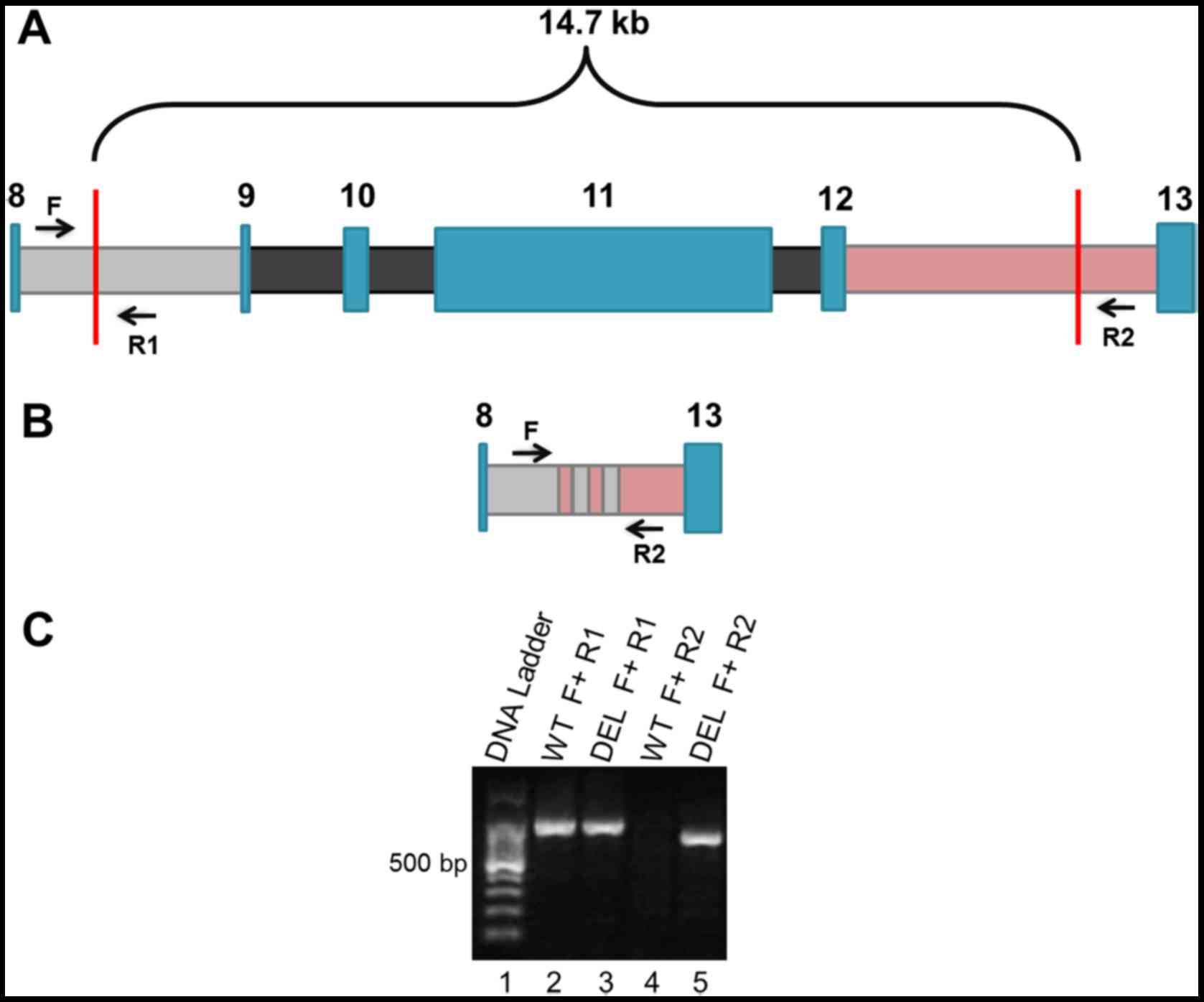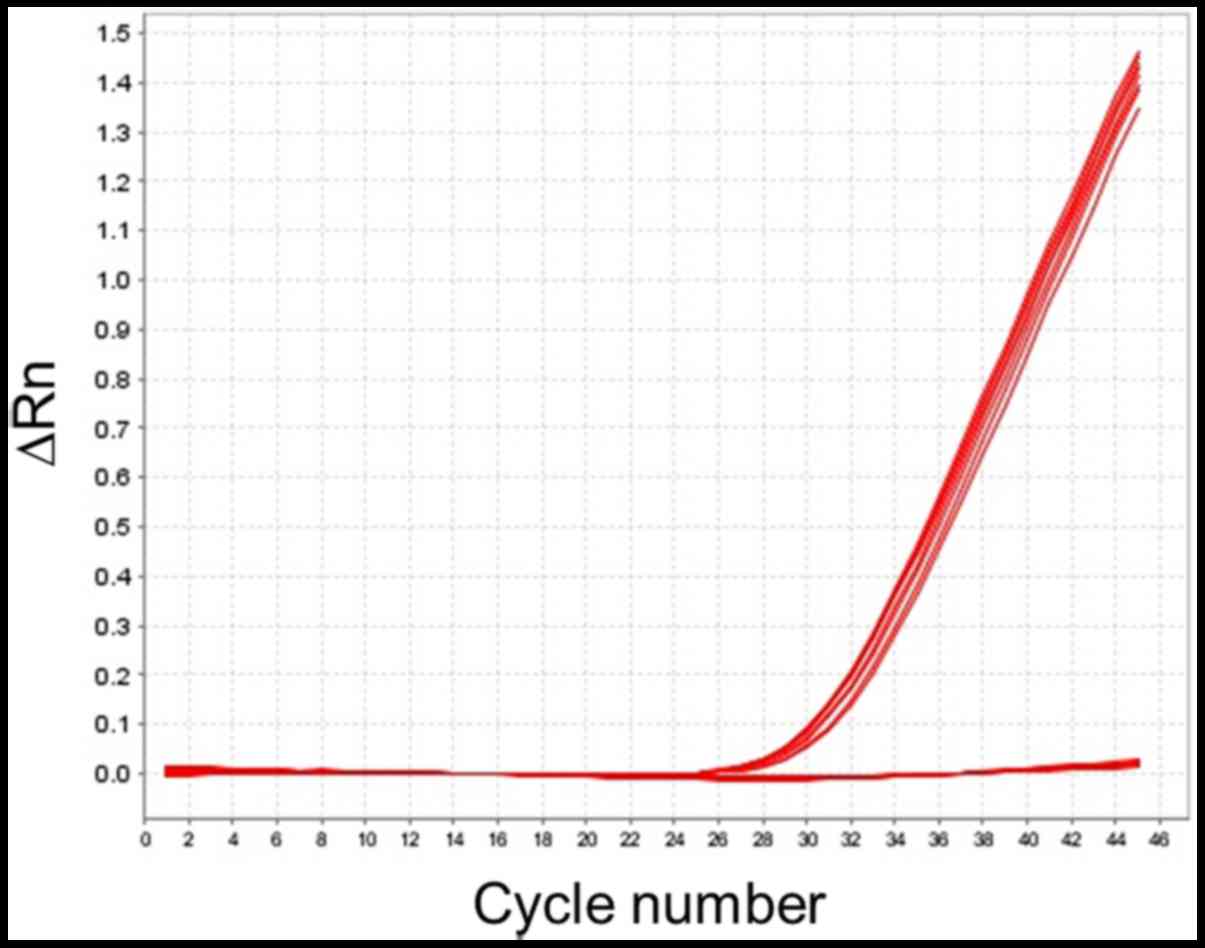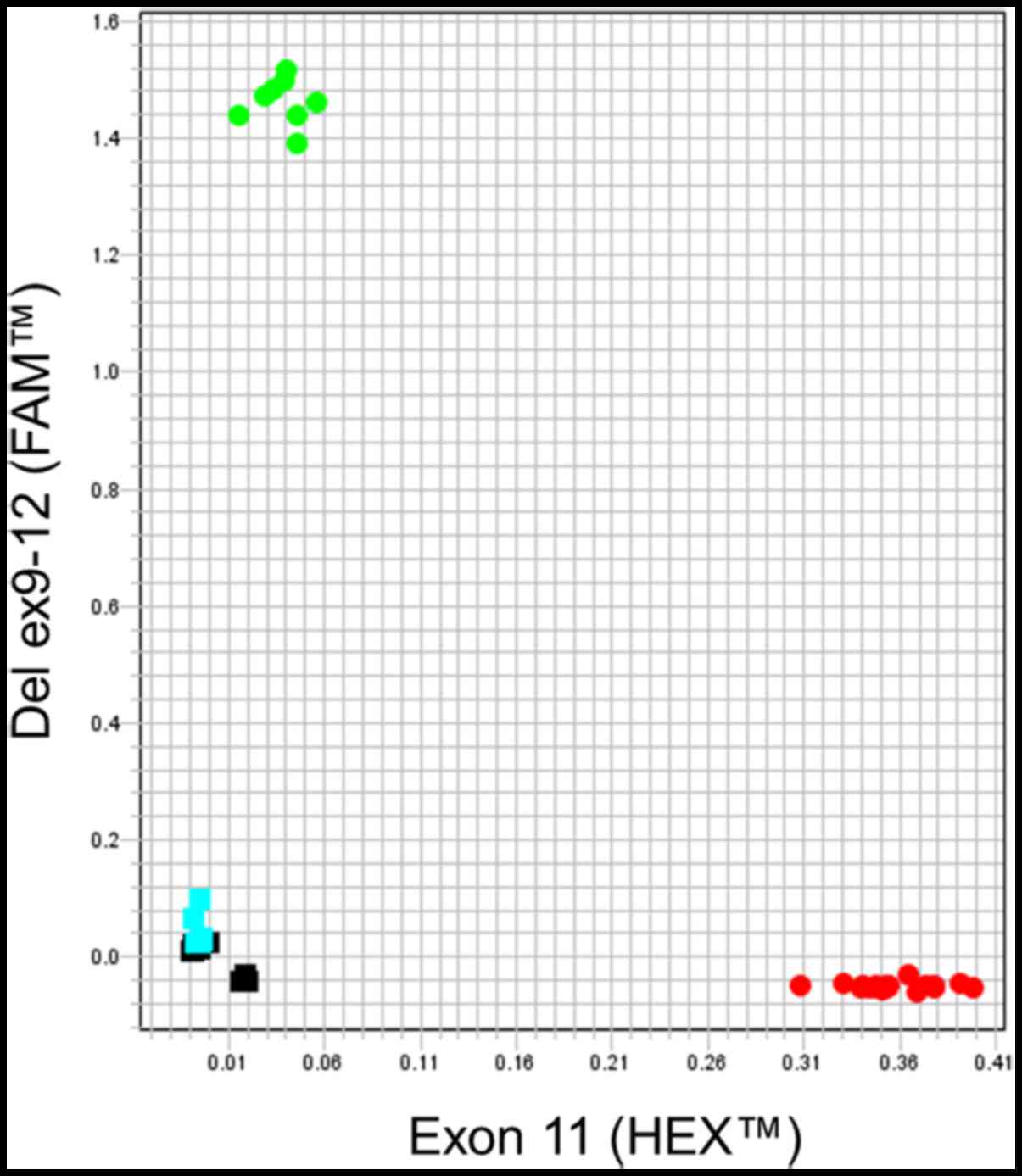|
1
|
National Institute of Statistics and
Geography (INEGI): Main causes of mortality by habitual residence,
age groups and gender of the deceasedQuery results: Basic
tabulations. INEGI; Mexico City: 2015, http://www.inegi.org.mx/est/contenidos/proyectos/registros/vitales/mortalidad/tabulados/pc.asp?t=14&c=11817November
15–2017
|
|
2
|
National Institute of Statistics and
Geography (INEGI): General Mortality. INEGI; Mexico City: 2015,
http://www.inegi.org.mx/sistemas/olap/Proyectos/bd/continuas/mortalidad/MortalidadGeneral.aspNovember
15–2017
|
|
3
|
Tajmul M, Parween F, Singh L, Mathur SR,
Sharma JB, Kumar S, Sharma DN and Yadav S: Identification and
validation of salivary proteomic signatures for non-invasive
detection of ovarian cancer. Int J Biol Macromol. 108:503–514.
2018. View Article : Google Scholar : PubMed/NCBI
|
|
4
|
Doubeni CA, Doubeni AR and Myers AE:
Diagnosis and management of ovarian cancer. Am Fam Physician.
93:937–944. 2016.PubMed/NCBI
|
|
5
|
Aguilar-Cordero MJ, González-Jimenez M,
Álvarez-Ferre J, Padilla-López CA, Mur-Villar N, García-López PA
and Valenza-Peña MC: Breast feeding: An effective method to prevent
breast cancer. Nutr Hosp. 25:954–958. 2010.(In Spanish). PubMed/NCBI
|
|
6
|
Lacey JV Jr, Kreimer AR, Buys SS, Marcus
PM, Chang SC, Leitzmann MF, Hoover RN, Prorok PC, Berg CD and
Hartge P: Prostate, Lung, Colorectal and Ovarian (PLCO) Cancer
Screening Trial Project Team: Breast cancer epidemiology according
to recognized breast cancer risk factors in the Prostate, Lung,
Colorectal and Ovarian (PLCO) Cancer Screening Trial Cohort. BMC
Cancer. 9:842009. View Article : Google Scholar : PubMed/NCBI
|
|
7
|
Ligibel J: Obesity and breast cancer.
Oncology (Williston Park). 25:994–1000. 2011.PubMed/NCBI
|
|
8
|
Luan NN, Wu QJ, Gong TT, Vogtmann E, Wang
YL and Lin B: Breastfeeding and ovarian cancer risk: A
meta-analysis of epidemiologic studies. Am J Clin Nutr.
98:1020–1031. 2013. View Article : Google Scholar : PubMed/NCBI
|
|
9
|
Reid BM, Permuth JB and Sellers TA:
Epidemiology of ovarian cancer: A review. Cancer Biol Med. 14:9–32.
2017. View Article : Google Scholar : PubMed/NCBI
|
|
10
|
Russo J, Balogh GA and Russo IH: Full-term
pregnancy induces a specific genomic signature in the human breast.
Cancer Epidemiol Biomarkers Prev. 17:51–66. 2008. View Article : Google Scholar : PubMed/NCBI
|
|
11
|
Cárdenas-Sánchez J, Bargalló-Rocha E,
Erazo-Valle A, Maafs-Molina E and Poitevin-Chacón A: Mexican
Consensus on diagnosis and treatment of breast cancer. 5th
revision. Masson Doyma México S.A; Mexico City: 2013
|
|
12
|
McCarthy AM and Armstrong K: The role of
testing for BRCA1 and BRCA2 mutations in cancer prevention. JAMA
Intern Med. 174:1023–1024. 2014. View Article : Google Scholar : PubMed/NCBI
|
|
13
|
Levy-Lahad E, Catane R, Eisenberg S,
Kaufman B, Hornreich G, Lishinsky E, Shohat M, Weber BL, Beller U,
Lahad A and Halle D: Founder BRCA1 and BRCA2 mutations in Ashkenazi
Jews in Israel: Frequency and differential penetrance in ovarian
cancer and in breast-ovarian cancer families. Am J Hum Genet.
60:1059–1067. 1997.PubMed/NCBI
|
|
14
|
Narod SA and Rodríguez AA: Genetic
predisposition for breast cancer. BRCA1 and BRCA2 genes. Salud
Publica Mex. 53:420–429. 2011.PubMed/NCBI
|
|
15
|
Weitzel JN, Lagos VI, Herzog JS, Judkins
T, Hendrickson B, Ho JS, Ricker CN, Lowstuter KJ, Blazer KR,
Tomlinson G and Scholl T: Evidence for common ancestral origin of a
recurring BRCA1 genomic rearrangement identified in high-risk
Hispanic families. Cancer Epidemiol Biomarkers Prev. 16:1615–1620.
2007. View Article : Google Scholar : PubMed/NCBI
|
|
16
|
Smith TM, Lee MK, Szabo CI, Jerome N,
McEuen M, Taylor M, Hood L and King MC: Complete genomic sequence
and analysis of 117 kb of human DNA containing the gene BRCA1.
Genome Res. 6:1029–1049. 1996. View Article : Google Scholar : PubMed/NCBI
|
|
17
|
Weitzel JN, Clague J, Martir-Negron A,
Ogaz R, Herzog J, Ricker C, Jungbluth C, Cina C, Duncan P, Unzeitig
G, et al: Prevalence and type of BRCA mutations in Hispanics
undergoing genetic cancer risk assessment in the southwestern
United States: A report from the Clinical cancer genetics community
research network. J Clin Oncol. 31:210–216. 2013. View Article : Google Scholar : PubMed/NCBI
|
|
18
|
Villarreal-Garza C, Alvarez-Gomez RM,
Perez-Plasencia C, Herrera LA, Herzog J, Castillo D, Mohar A,
Castro C, Gallardo LN, Gallardo D, et al: Significant clinical
impact of recurrent BRCA1 and BRCA2 mutations in Mexico. Cancer.
121:372–378. 2015. View Article : Google Scholar : PubMed/NCBI
|
|
19
|
Torres-Mejia G, Royer R, Llacuachaqui M,
Akbari MR, Giuliano AR, Martinez-Matsushita L, Angeles-Llerenas A,
Ortega-Olvera C, Ziv E, Lazcano-Ponce E, et al: Recurrent BRCA1 and
BRCA2 mutations in Mexican women with breast cancer. Cancer
Epidemiol Biomarkers Prev. 24:498–505. 2015. View Article : Google Scholar : PubMed/NCBI
|
|
20
|
Villarreal-Garza C, Weitzel JN,
Llacuachaqui M, Sifuentes E, Magallanes-Hoyos MC, Gallardo L,
Alvarez-Gomez RM, Herzog J, Castillo D, Royer R, et al: The
prevalence of BRCA1 and BRCA2 mutations among young Mexican women
with triple-negative breast cancer. Breast Cancer Res Treat.
150:389–394. 2015. View Article : Google Scholar : PubMed/NCBI
|
|
21
|
de la Hoya M, Gutierrez-Enriquez S,
Velasco E, Osorio A, de Abajo Sanchez A, Vega A, Salazar R, Esteban
E, Llort G, Gonzalez-Sarmiento R, et al: Genomic rearrangements at
the BRCA1 locus in Spanish families with breast/ovarian cancer.
Clin Chem. 52:1480–1485. 2006. View Article : Google Scholar : PubMed/NCBI
|
|
22
|
Torres D, Rashid MU, Seidel-Renkert A,
Weitzel JN, Briceno I and Hamann U: Absence of the BRCA1 del (exons
9–12) mutation in breast/ovarian cancer families outside of Mexican
Hispanics. Breast Cancer Res Treat. 117:679–681. 2009. View Article : Google Scholar : PubMed/NCBI
|
|
23
|
Judkins T, Rosenthal E, Arnell C, Burbidge
LA, Geary W, Barrus T, Schoenberger J, Trost J, Wenstrup RJ and Roa
BB: Clinical significance of large rearrangements in BRCA1 and
BRCA2. Cancer. 118:5210–5216. 2012. View Article : Google Scholar : PubMed/NCBI
|
|
24
|
Cartwright-Smith L: Patenting genes: What
does Association for Molecular Pathology v. Myriad Genetics mean
for genetic testing and research? Public Health Rep. 129:289–292.
2014. View Article : Google Scholar : PubMed/NCBI
|
|
25
|
Myriad, . BRACAnalysis® Large
Rearrangement Test (BART). FAQ. https://webapps.myriad.com/lib/brac/BART-faq.pdfNovember
30–2017
|
|
26
|
Ewald IP, Ribeiro PL, Palmero EI, Cossio
SL, Giugliani R and Ashton-Prolla P: Genomic rearrangements in
BRCA1 and BRCA2: A literature review. Genet Mol Biol. 32:437–446.
2009. View Article : Google Scholar : PubMed/NCBI
|
|
27
|
Siravegna G, Marsoni S, Siena S and
Bardelli A: Integrating liquid biopsies into the management of
cancer. Nat Rev Clin Oncol. 14:531–548. 2017. View Article : Google Scholar : PubMed/NCBI
|
|
28
|
National Cancer Institute (NCI), .
National Institute of Health (NHI)Liquid Biopsy: Using DNA in blood
to detect, track and treat cancer. NCI Staff; United States: 2017,
https://www.cancer.gov/news-events/cancer-currents-blog/2017/liquid-biopsy-detects-treats-cancerFebruary
12–2018
|
|
29
|
Cohen JD, Li L, Wang Y, Thoburn C, Afsari
B, Danilova L, Douville C, Javed AA, Wong F, Mattox A, et al:
Detection and localization of surgically resectable cancers with a
multi-analyte blood test. Science. 359:926–930. 2018. View Article : Google Scholar : PubMed/NCBI
|
|
30
|
D'Andrea E, Marzuillo C, De Vito C, Di
Marco M, Pitini E, Vacchio MR and Villari P: Which BRCA genetic
testing programs are ready for implementation in health care? A
systematic review of economic evaluations. Genet Med. 18:1171–1180.
2016. View Article : Google Scholar : PubMed/NCBI
|
|
31
|
Martinez-Trevino DA, Moreno-Trevino MG,
Salinas-Santander M, Wohn L, Herrera-Gonzalez S, Aguirre-Garza M,
Rojas OC and Leon-Cachon RB: Rapid Detection of the GSTM3 A/B
polymorphism using real-time PCR with TaqMan® Probes.
Arch Med Res. 47:142–145. 2016. View Article : Google Scholar : PubMed/NCBI
|
|
32
|
Sawyer SL, Tian L, Kähkönen M,
Schwartzentruber J, Kircher M; Univeristy of Washington Centre for
Mendelian Genomics; FORGE Canada Consortium, ; Majewski J, Dyment
DA, Innes AM, et al: Biallelic mutations in BRCA1 cause a new
Fanconi anemia subtype. Cancer Discov. 5:135–142. 2015. View Article : Google Scholar : PubMed/NCBI
|
|
33
|
Domchek SM, Tang J, Stopfer J, Lilli DR,
Hamel N, Tischkowitz M, Monteiro AN, Messick TE, Powers J, Yonker
A, et al: Biallelic deleterious BRCA1 mutations in a woman with
early-onset ovarian cancer. Cancer Discov. 3:399–405. 2013.
View Article : Google Scholar : PubMed/NCBI
|
|
34
|
Rebbeck TR, Friebel TM, Mitra N, Wan F,
Chen S, Andrulis IL, Apostolou P, Arnold N, Arun BK, Barrowdale D,
et al: Inheritance of deleterious mutations at both BRCA1 and BRCA2
in an international sample of 32,295 women. Breast Cancer Res.
18:1122016. View Article : Google Scholar : PubMed/NCBI
|
|
35
|
Howlett NG, Taniguchi T, Olson S, Cox B,
Waisfisz Q, De Die-Smulders C, Persky N, Grompe M, Joenje H, Pals
G, et al: Biallelic inactivation of BRCA2 in Fanconi anemia.
Science. 297:606–609. 2002. View Article : Google Scholar : PubMed/NCBI
|
|
36
|
Armour JA, Barton DE, Cockburn DJ and
Taylor GR: The detection of large deletions or duplications in
genomic DNA. Hum Mutat. 20:325–337. 2002. View Article : Google Scholar : PubMed/NCBI
|
|
37
|
Jeuken J, Cornelissen S, Boots-Sprenger S,
Gijsen S and Wesseling P: Multiplex ligation-dependent probe
amplification: A diagnostic tool for simultaneous identification of
different genetic markers in glial tumors. J Mol Diagn. 8:433–443.
2006. View Article : Google Scholar : PubMed/NCBI
|

















